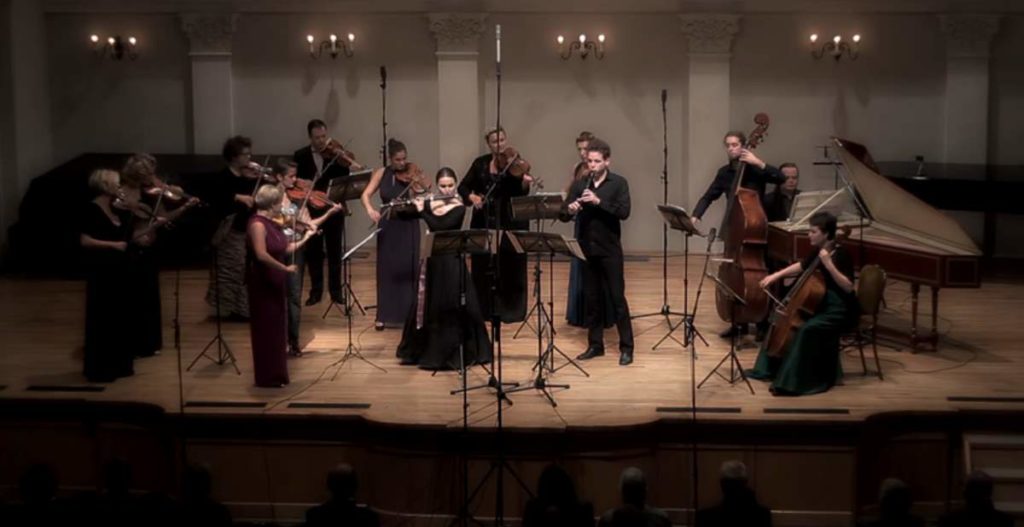The Bremer Barockorchester performs Georg Philipp Telemann’s Concerto for Recorder and Flute, TWV 52:e1. Soloists: Anninka Fohgrub, recorder; Felipe Egaña, traverso. This performance was recorded during Bremer Barockorchester’s “Music without Borders” concert at the Unser Lieben Frauen Church in Bremen on November 21, 2015.
Performers
- Traverso: Felipe Egaña
- Recorder: Anninka Fohgrub
- 1st Violins: Stéphanie Paulet, Tomoe Badiarova, Meelis Orgse
- 2nd Violins: Andrea Vassalle, Luis Pinzón, Valeria Caponetto
- Viola: Benjamin Lescoat
- Violoncello: Néstor Cortés
- Bass: Felix Görg
- Continuo: Hugo de Rodas, Nadine Remmert
Georg Philipp Telemann’s Concerto for Recorder and Flute, TWV 52:e1
Georg Philipp Telemann’s Concerto for Traverso and Recorder in E minor, TWV 52:e1, is a captivating piece that exemplifies Telemann’s inventive compositional style. This concerto is structured into four movements, each showcasing the contrasting qualities of the traverso (Baroque flute) and recorder, set against the backdrop of a string orchestra and continuo. There are four movements, with the start times in the video above:
- [01:34] The first movement, marked Largo, sets a solemn and introspective tone. It opens with a gentle and expressive dialogue between the traverso and recorder, underpinned by a delicate orchestral accompaniment. This movement establishes the emotional depth of the concerto, inviting listeners into a reflective musical journey.
- [05:19] Following the Largo, the Allegro movement bursts forth with energy and vivacity. It features rapid exchanges between the solo instruments, highlighting their virtuosity. The fast-paced melodies and rhythmic drive of this movement create a lively contrast to the preceding Largo, showcasing Telemann’s ability to compose engaging and dynamic music.
- [09:13] The third movement, marked Largo, returns to a more solemn and tender mood. It serves as a poignant interlude, where the traverso and recorder weave together slow, melancholic melodies. The Grave movement offers a moment of introspection, showcasing the expressive capabilities of the solo instruments and the depth of Telemann’s musical imagination.
- [12:38] The concerto concludes with a Presto movement, a lively and joyful finale. This movement is characterized by its brisk tempo and spirited interplay between the traverso, recorder, and orchestra. The Presto brings the concerto to an uplifting and exuberant close, leaving listeners with a sense of fulfillment and admiration for Telemann’s compositional prowess.
Telemann’s Concerto for Traverso and Recorder in E minor, TWV 52:e1, is a masterful work that demonstrates the composer’s skill in crafting music that is both emotionally resonant and technically challenging. Each movement contributes to the overall narrative of the concerto, creating a rich and varied musical experience.
Sources
- Concerto for Recorder and Flute, TWV 52:e1 (Telemann, Georg Philipp) on the International Music Score Library Project website
